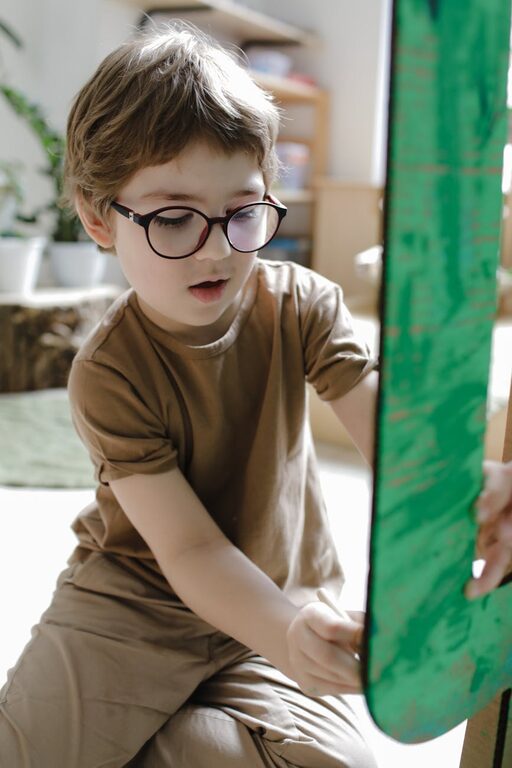Keeping your children’s artwork organized can be a wonderful way to cherish their creativity without feeling overwhelmed by clutter. From finger paintings to school projects, children create a lot of art that deserves attention and proper care. However, as these masterpieces accumulate, it’s easy for your home to become cluttered. This blog post offers practical tips and clever ideas to help you organize kids’ art and maintain a neat, welcoming space.
Why Organize Kids’ Artwork?
Before diving into the strategies, it’s helpful to understand why organizing your child’s art is beneficial:
– Preserves Memories: Artwork reflects your child’s growth and creativity, so keeping it accessible lets you and your child enjoy those memories.
– Encourages Creativity: A tidy space encourages further artistic expression without distractions of clutter.
– Reduces Stress: An organized home feels more peaceful and reduces the stress that clutter can cause.
– Teaches Responsibility: Involving your child in organizing teaches them valuable skills about care and tidiness.
1. Sort and Select Regularly
Start by sorting through the artwork periodically. Not all pieces need to be kept forever.
Tips for Sorting:
– Create Categories: Use categories like schoolwork, drawings, crafts, or thematic groups.
– Select Favorites: Keep the most meaningful or impressive pieces. Ask your child to pick their favorites.
– Recycle Mindfully: It’s okay to discard some art. Explain to your child why, helping them understand that space is limited.
Setting a regular schedule—such as monthly or quarterly reviews—makes the task manageable.
2. Use Storage Solutions That Work for You
Once you’ve selected the pieces to keep, effective storage is key.
Popular Options Include:
– Portfolios and Binders: Store flat artwork in clear sleeves inside a large binder or portfolio folder. This keeps things neat and easy to browse.
– Artwork Boxes: Decorate labeled boxes for each child to hold artwork, especially 3D projects or larger pieces.
– File Folders: Use expandable accordion file folders sorted by year or grade.
– Digital Storage: Photograph or scan artwork to create a digital archive, which saves physical space.
Choose solutions that fit your available space and lifestyle.
3. Create an Art Display Area at Home
Displaying some of the artwork honors your child’s creativity and keeps their art visible.
Ideas for Art Displays:
– Rotating Gallery: Use a corkboard, string with clips, or magnetic strips to create a spot where art changes regularly.
– Frames with Storage: Some picture frames open easily to swap artwork and store several pieces behind the current display.
– Clipboards on Walls: Attach several clipboards for quick changes and an organized feel.
– DIY Art Wall: Dedicate a wall or section of a room to hang art using washi tape or removable hooks.
Changing the displays periodically keeps the space fresh and engaging.
4. Make a Custom Art Book or Calendar
Transform your child’s artwork into a photo book or calendar to keep memories alive and functional.
How to Create:
– Photograph or Scan: Capture each piece in good lighting.
– Use Online Services: Many websites allow you to upload images and design personalized books or calendars.
– Gift Ideas: These books make wonderful gifts for family members.
This also reduces the need to keep every original piece.
5. Encourage Art Projects That Are Easy to Store
Certain types of art are simpler to manage than others.
Suggestions:
– Use Paper Sizes That Fit Storage: Encourage your child to create on standard paper sizes that fit binders and folders.
– Flat Crafts: Opt for collages or drawings rather than large bulky sculptures.
– Reusable Art: Try chalkboards or dry erase boards for temporary creations.
Balancing different types of art projects can ease organization.
6. Get Your Kids Involved
Teaching children to organize and care for their art builds responsibility and pride.
How to Involve Kids:
– Decision Making: Let them choose what to keep or display.
– Organizing Together: Sort and store artwork as a team.
– Labeling: Help them label boxes or files with dates or descriptions.
– Clean-Up Routine: Incorporate art storage into daily or weekly clean-up.
This involvement helps develop lifelong organizational skills.
7. Avoid Common Pitfalls
Here are some mistakes to watch out for:
– Saving Everything: This can lead to overwhelming clutter.
– Inconsistent Sorting: Without routine, piles grow too large to manage easily.
– Ignoring Digital Backup: Without digital copies, physical art may be lost or damaged.
– Neglecting Display Areas: Without a way to appreciate their creations, children may feel their efforts are undervalued.
Final Thoughts
Organizing your child’s artwork doesn’t have to be a chore. With a few simple systems and regular upkeep, you can keep these precious creations safe and well-loved. Whether you prefer physical storage, displays, or digital archiving, the key is finding what works for your family’s lifestyle. Most importantly, enjoy the experience of celebrating your child’s creativity every step of the way!
Feel free to share your favorite art organization tips in the comments below!

